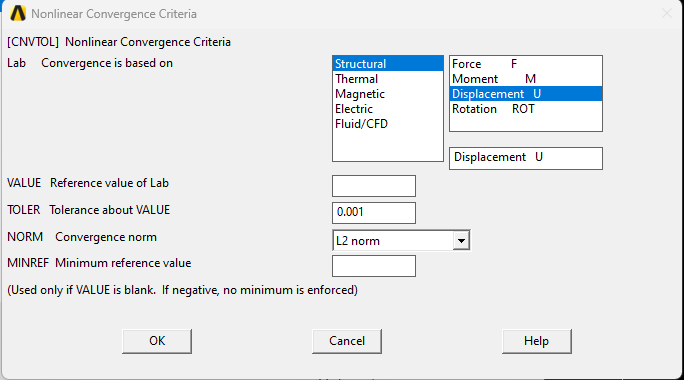-
-
October 25, 2023 at 6:18 am
SULUN SHI
SubscriberHi,
I am doing a nonlinear analysis for the pretensioned concrete beam. The key focus is transfer length. After analyzing the beam, I checked several results. However, some parts were confirmed that were different from the predicted data.
My teacher suggested I achieve a tighter convergence in the analysis.
In addition to increasing the maximum number of iterations, I can use the CNVTOL command to set the convergence value for the nonlinear analysis. I have some questions:
- Convergence based issue: As far as the structure is concerned, which method has more convergence and better accuracy of the overall strain curve? Force or displacement?
- Is a lower tolerance value better?
- Minimum reference value. I don't understand what it is, Does this represent the best value of convergence achievable?
- What is the difference between VALUE and minimum reference value?
- Should the convergence value be as low as possible (e.g. 10^(-10)) or as high as possible (e.g. (1,000,000,000)) in order to achieve higher accuracy of the results?
-
October 26, 2023 at 9:40 am
Surya Prakash
Ansys EmployeeHi,
Convergence depends from problem to problem, but for majority of the nonlinear problems, force convergence serves as a first step, a displacement convergence acts as an additional verification step. All other convergence checks will also be done with their default settings. Please find this KM -
1) What is displacement convergence? 2) In some cases force or displacement convergence alone is sufficient while in some other cases both are activated. What is the reason for this? - Ansys Knowledge
Also find this CNVTOL help documentation for more information -
CNVTOL (ansys.com)
Thanks,
Surya
-
- The topic ‘Nonlinear convergence criteria in ANSYS APDL’ is closed to new replies.



-
3372
-
1050
-
1047
-
886
-
837

© 2025 Copyright ANSYS, Inc. All rights reserved.








